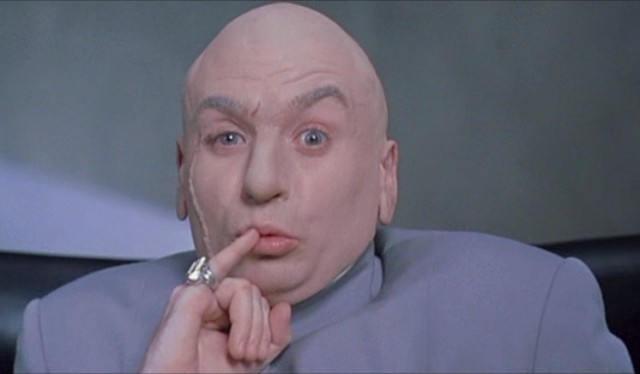How Much Do You Need to Save for a Million-Dollar Retirement?

We’re all sort of familiar with the idea that we need to save a bajillion dollars for retirement, right? Or, at least, one million dollars? Everyone has different retirement needs, but “one million” gets tossed around as a nice round number that we are pressured to aspire towards.
But what does that mean in the practical sense? If you’re the sort of person who likes to-do lists, the Reno-Gazette Journal has broken down exactly how much you’ll need to save, per year, to have a million dollars when you retire:
40 years — $5,009 per year
30 years — $10,586 per year
20 years — $24,393 per year
10 years — $72,378 per year
They’re working backwards from the target retirement date, and assuming you’re investing in a 401(k) or other vehicle with an average 7 percent return. So, if you plan to retire at 65, you need to start putting $5,009 per year into an investment vehicle starting at age 25.
I certainly wasn’t making enough at age 25 to put aside $5,009. I remember counting quarters and timing my bus rides to only ride during off-peak times, and I felt very proud that I had $500 saved by the end of the year.
When I started working as an executive assistant at age 27, I started contributing to my 403(b), and I contributed enough to get the highest possible company match. Between 2009–2012, I contributed $8,314.02 to my 403(b) — not the recommended $5K/year — but my employer contributed $15,493.39, which brings the total four-year contribution to $23.807.31.
Wow. I guess I was on target to be a millionaire retiree. I mean, I’d have to retire at 67 instead of 65, but I’d still be a millionaire, right?
Now let’s take a look at the rate of return. My portfolio, which is still chugging along despite the fact that I haven’t contributed to it since 2012, is currently getting a 4.3 rate of return. That’s… less than 7 percent. But maybe if I look at previous years, it’ll average out to 7 percent!
Here’s what TIAA-CREF lists as my yearly personal rate of returns:
2009: 23.2%
2010: 11.9%
2011: 1.3%
2012: 10.9%
2013: 17.0%
2014: 7.6%
2015: 4.3%
They even do the math for me, letting me know this averages to a 10 percent return over the course of my 403(b) account.
I wasn’t expecting this. I was ready to be all cynical about how I couldn’t possibly have been a millionaire retiree, but it looks like I could have been on track, assuming I was able to maintain a job where I could both make 403(b) contributions and receive almost double my own contributions in an employer match.
And the interesting thing is that I could still come close to millionaire status. If the 40-year clock starts in 2009, I’ve put aside $5K/year for four years (2009–2012), and $0K/year for two years (2013–2014). This year, if I keep my 10 percent savings plan up and have no emergencies, I could toss $4,000 into a Roth IRA in December and kick the retirement plan back into gear. I only have to put aside $5K/year, after all.
This feels extraordinarily weird. I do not think of myself as “potential millionaire,” I think of myself as “person who gets all panicky every time she throws food out that could technically have been eaten.”
At this point, because I have proven more than once that I am not an investment expert, I’m turning it over to you. Could I retire a millionaire, assuming I can set aside $5K/year for the rest of my working life? Are you planning to retire a millionaire?
Support The Billfold
The Billfold continues to exist thanks to support from our readers. Help us continue to do our work by making a monthly pledge on Patreon or a one-time-only contribution through PayPal.
Comments